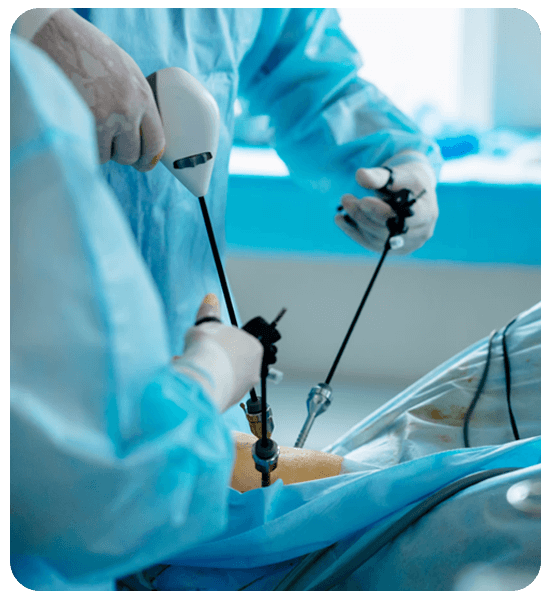An endoscopy is a medical procedure that allows a doctor to examine the inside of the body using a long, flexible tube with a camera and lens called an endoscope. A doctor inserts the endoscope through a natural opening in the body, such as the mouth, anus, or urethra.
Endoscopes are available in various shapes and sizes, designed specifically for the area of the body being examined. These instruments are used for diagnosis, screening, and surgical procedures. The type of endoscopy performed depends on the patient’s symptoms and the particular area of concern. Although endoscopy is generally considered safe, it is not without risk, and, in some cases, complications may arise.



Gynaecological endoscopy is a specialised surgical procedure used to diagnose and treat gynaecological conditions, particularly related to infertility. It is crucial in achieving the highest success rates for in vitro fertilisation (IVF). If we detect any complexities at KD Hospital, we recommend advanced endoscopy to identify the underlying cause of infertility or gynaecological conditions accurately. It allows us to promptly diagnose and begin the most appropriate treatment for our patients.
IVF treatment is often more expensive than traditional maternity care. Therefore, before proceeding with IVF, it's wise to undergo advanced endoscopy to accurately diagnose the underlying issue and determine the most appropriate treatment. It helps avoid unnecessary procedures and increases the chances of success. Without proper diagnosis, treatment failure can take a toll on the patient physically, mentally, and financially. Our team of IVF experts is dedicated to providing the highest level of fertility care, ensuring the best possible outcomes for our patients.
Gynaecological endoscopy includes two main procedures: hysteroscopy and laparoscopy. Hysteroscopy identifies abnormalities in the uterine cavity, while laparoscopy helps detect issues within the abdominal cavity. Both methods are minimally invasive, safe, and typically require only a short recovery time. With the doctor's approval, most patients can be discharged within two to three hours. Additionally, these procedures have fewer side effects and are more cost-effective than traditional surgery.